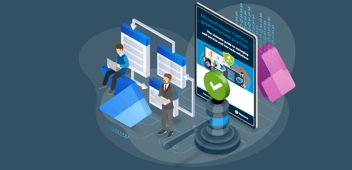We’re back with our second installment of the GRC blog series. Last week, we talked about organizations following the rules. GRC, or Governance, Risk management and Compliance is a crucial step in assuring the confidentiality, integrity and best practices of an organization and its stakeholders.
In this post, we will go into detail about the advantages, but possible roadblocks to successful IT Governance within your organization.
The way your organization polices itself is critical to its long-term sustainability, not to mention being a responsible business. Governance is an area of business that needs to be built from the ground up; it complements your organization’s overall GRC structure and should exist in the very foundations of your business.
Good Governance is about more than just an organization’s moral and legal intentions. By increasing your company’s accountability, you also strengthen its ability to avoid a crisis before it occurs – crises that affect everyone from your employees, shareholders, and suppliers to customers or even the general public. So, it’s important that you actively put frameworks in place to make sure your organization is accountable with regards to your processes and actions.
The challenge of IT Governance
Even organizations who are a model of consistency in their Governance practice can find difficulty in the ever-changing world of IT. There has been a recent surge in technologies that have changed the way we complete our business processes. As a result, keeping Governance up to date can be a real challenge.
Your IT operations essentially run everything in your business that Governance is concerned with, such as data retention and storage, disaster recovery, and risk mitigation.
While these technological advancements, like mobile working, are making employees more efficient at their jobs, they are at the same time adding to the difficulty of IT Governance. For example, with the increase in the Bring Your Own Device (BYOD) organizations are having to come up with better ways to secure networks, monitor shadow IT or make sure important documents are not being viewed by unauthorized people.
Put the focus on IT Governance
IT Governance aims to:
- Recognize the importance of a business’s IT setup
- Identify issues related to IT
- Enable an organization to continue its operations in the present
- Enable an organization to extend its operations into the future
What IT Governance really aims to do is bring together what an organization intends to do and what it delivers. In other words, making sure that the IT infrastructure of the organization runs smoothly.
Barriers to IT Governance
IT Governance is complicated which makes it time-consuming and expensive to implement properly. Technology has become one of the main drivers of business functionality and efficiency and it’s important to be able to incorporate good foundational Governance without stymying your IT tools and solutions. Luckily, if done correctly, good IT Governance need not be so challenging.
Changing IT
If your organization uses SharePoint you’ll know the benefits it can bring to your business processes. You might also know the importance of ensuring the platform has a good Governance plan in place before problems arise. In the past, when SharePoint was only available on-premises, Governance wasn’t so much of an issue. It was relatively easy to control in a typical top-down Governance model.
That has changed with the development and popularity of hybrid cloud environments, mobile working, the popularity of BYOD (Bring Your Own Device), and the massive increase in the volume of data that organizations are collecting. As a result, the traditional manner of Governance must be adapted for a modern cloud-based environment. That means changes to things like reports and auditing, financial administration, and permissions management.
Customizations and add-ins
Another popular function of SharePoint is the ability it gives you to customize your platform, adding flexibility to how you work. This means you can build specific tools in SharePoint that allow you to get your unique work done more efficiently, or import special add-ins that give your employees extra tools to complete tasks.
However, this also proves to be a challenge for your IT Governance policy. That’s because customized code needs its own Governance procedure. Not all code is created equal. Unsafe code or certain third-party add-ins can introduce security problems. And depending on the size of your organization or how long you’ve been using your SharePoint environment, even finding all the customized code that exists in the system can be very difficult.
A solution to IT Governance problems?
It’s at the core foundation of your IT infrastructure that Rencore helps organizations govern their SharePoint customizations, and therefore, their overall GRC plan. Trying to implement Governance policies and practices in your IT infrastructure manually is a time-consuming and extremely complicated job, and one that your IT team could do without—they have plenty of other jobs to do.
By using tools which automate the process of IT Governance, you ensure your company has coding policies and rules in place, monitoring your customizations continuously. Rencore’s tools help you maintain your Governance policies and stop issues before they ever become a problem.
Whether on-premises or in the cloud, Rencore’s Governance and Risk prevention solutions automagically check thousands of lines of code against a Governance plan, ensuring your IT foundations are strong, water-tight and flex with the latest Microsoft updates.
Your foundations to IT Governance
As businesses look to IT to find more efficient ways of working, IT Governance will continue to be an essential aspect for how they operate. By making sure that IT Governance is a pillar of your organization’s foundations, you will be able to keep authority over your processes, now and with future innovations.
In the ever-evolving world of business and technology, theories and practices are always being challenged and improved. Keep an eye on where GRC might be heading in the future by reading up on Gartner’s Integrated Risk Management (IRM) Magic Quadrant.





